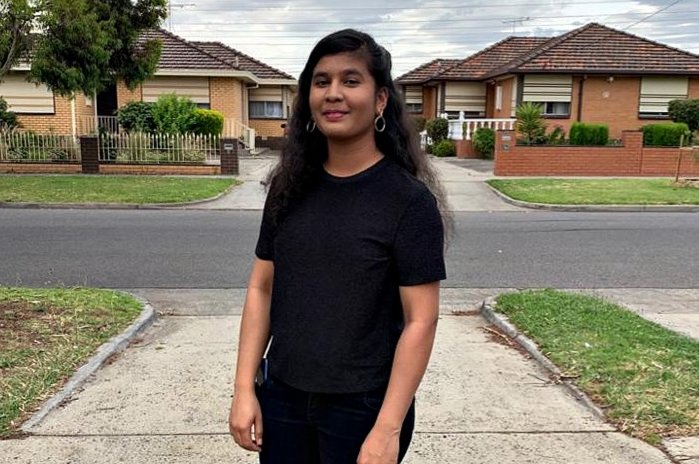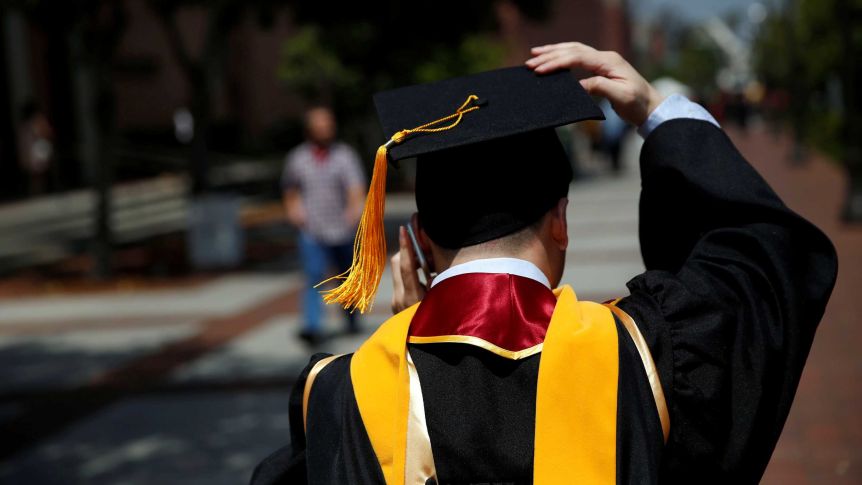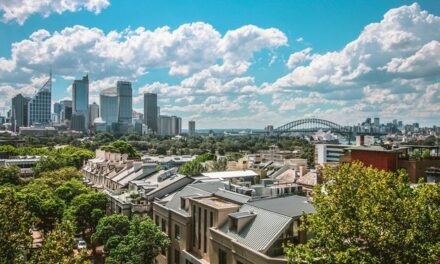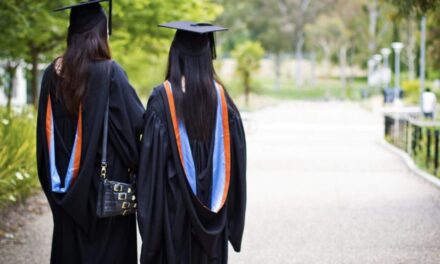International student visa applications from outside Australia have dropped off a cliff, raising serious concerns of an increasing budget black hole for Australian higher education.
Just 72,397 student visa applications have been received from prospective overseas students from January to July, 40 per cent of the total for the same period last year, Department of Home Affairs data shows.
The drop-off became particularly acute from April, when Australia was well into its national shutdown.
In June, normally a peak month, applications were down 30,000 on the year before, with just 4,062 submitted from people currently overseas.
“It has just collapsed,” said Peter Hurley from Victoria University’s Mitchell Institute for Education and Health Policy.
“This is not just a university problem. International students spend much more in the economy than just on student fees, and so it has an effect on the entire economy when they aren’t coming.”
International education was worth $37.6 billion to the Australian economy last year, but continued border closures are putting that at risk.
Analysis from the Mitchell Institute forecast a $19 billion loss in student revenue over the next three years if the international borders remained closed until the end of 2021.
The National Tertiary Education Union estimates at least 12,500 people have already lost their job in the sector this year, largely as a result of the loss of international student fees.
“We modelled what the impact would be and we had a good scenario and a bad scenario,” Dr Hurley said.
“The bad is happening and is likely to get worse, because the longer those borders stay shut, the less likely we are going to get back those international students.”
But an increasing body of evidence suggests it is not only the border closures that are turning international students off Australia, but also the way they have been treated during the pandemic.
Killing the golden goose
Exploitation, racism and a lack of government support are all contributing to international students becoming disillusioned with Australia.
A survey released last month of more than 5,000 international students by the Migrants Workers Justice Initiative found 59 percent of respondents were now less likely to recommend Australia as a study destination than before the pandemic.
Alarmingly, it was even higher in two key markets, with 76 percent of Chinese students and 69 percent of Nepalese students reporting being less likely to recommend Australia.
Racism towards international students was also rampant, with almost a quarter reporting being verbally racially abused, rising to more than half of Chinese respondents.
International students and other temporary migrants were denied Federal Government supports, including JobKeeper and JobSeeker, despite 70 percent (according to the survey) losing hours or employment altogether.
According to co-author Associate Professor Laurie Berg of the Faculty of Law at the University of Technology Sydney, the Prime Minister’s statement in April that students should “make their way home” if they could no longer support themselves was frequently cited by disillusioned respondents.
“Thousands expressed anger and distress at the Australian government and hundreds mentioned the PM’s statement specifically,” she said.
In all, 35 percent of respondents said they would run out of funds by October. Besides that, a third said they had to seek emergency support to meet their basic needs.
That was the case for masters student at LaTrobe University, Swapna Karanam.
She lost her job as a waitress at the start of the pandemic. Now she has been relying on food from charities and her local council to survive.

“Several NGOs helped me, giving me food and food vouchers to buy groceries,” she said.
“Coming to rent, for two months I used my savings, and after one month I applied for grants.”
The manufacturing engineering student has just received a Victorian Government rent relief grant worth up to $3,000, which will help her get to the end of the academic year.
Her flatmate, Abhishek Chevella, who is doing the same course, was lucky enough to keep his job. However, his hours as an overnight paper deliverer have been reduced.
For months, he has been barely scraping by earning $350 to $400 week, of which $70 goes straight to petrol costs for his delivery job.
“This $400 is not enough for me for rent, bills and maintenance,” he said.
Mr Chevella feels let down by Australia and says because of his treatment during the pandemic he will tell his friends to go elsewhere.
“I’m sorry, I can’t recommend they come to Australia to study,” he said.
The myth about wealthy students
Dr Berg said for years international students had been treated as cash cows, yet often faced exploitation by employers and financial hardship even before the pandemic.
“Many felt like they are treated purely as a revenue stream and then having been abandoned when they themselves were in need,” she said.
Dr Hurley agreed.
“I think there is a bit of a myth that international student are wealthy,” he said.
“Some are wealthy, but many don’t have huge means behind them.”
Mr Chevella’s experience was far from the glowing image of Australia the glossy education brochures promise, even before the pandemic.

He borrowed more than $50,000 to study in Australia after an education consultant in India convinced him to ditch the significantly cheaper course to which he’d already been accepted in the UK.
“Every consultant in Hyderabad I visited said Australia would be best, that I could work part time and pay back my fees,” he said.
But when he got here, the situation was very different.
Mr Chevella said he had worked in five restaurants where he had been underpaid, including one where he received $70 for six-and-a-half hour shifts.
Since he lost his hours working as a paper deliverer during the pandemic, he has been unable to pay back the loan to his bank in India, which is charging 13 percent interest.
Although the bank has been accommodating, his next lot of university fees are now due, and the bank won’t release further money until he starts to pay down some of his existing loans.

Mr Chevella doesn’t feel that the education was worth it, as his course is going over material already covered in his bachelor’s degree.
“The cost of living we can’t afford, with the rule of only being able to work 20 hours a week, and the exploitation and the stress, it’s a very big issue for students,” he said.
“So I don’t recommend them [prospective students] to come here.
“Instead, they can go to the UK for a much less fee.”
The Federal Government said extending JobKeeper and JobSeeker to people on temporary visas, including international students, would have cost a further $20 billion.
However, Dr Berg said the decision not to had cost Australia’s reputation as a good place to study.
“It was a short-sighted economic decision and one that was not taken by other countries and other similar education markets, like the UK and Canada and Ireland,” she said.
By Madeleine Morris
Like this? Then you’ll love…https://talkstudy.co/education-news/ed-news-australia/could-australia-be-the-student-mobility-comeback-kid/






Recent Comments